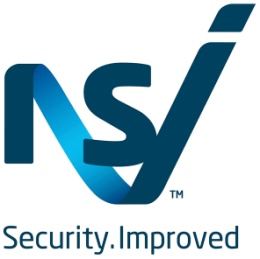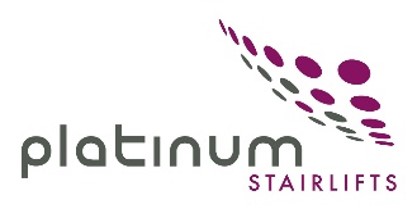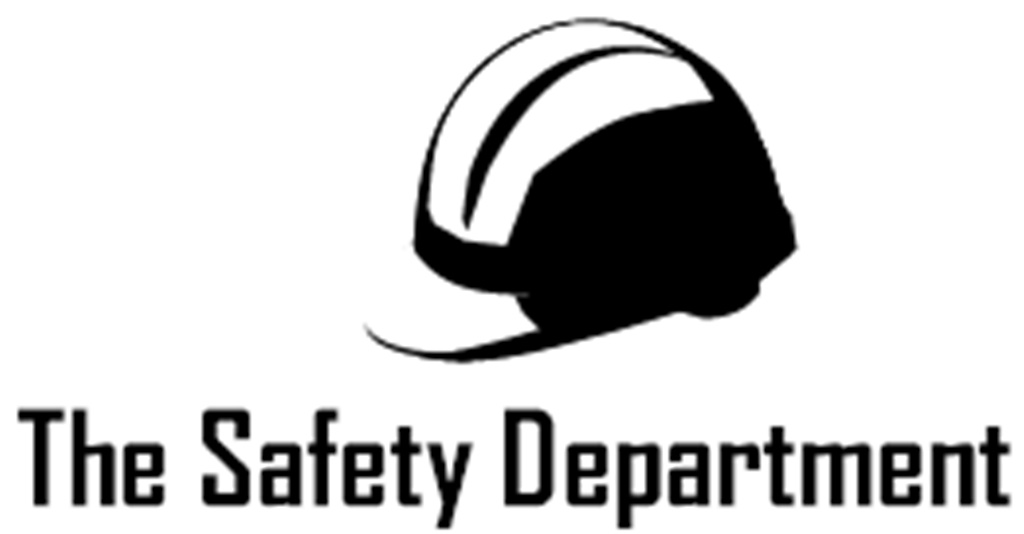Title Page
-
Site
-
Conducted on
-
Authorized Person
Governance for Safety and Quality in Health Service Organisations
-
1.1 Implementing a governance system that sets out the policies, procedures and/or protocols for:
-
Establishing and maintaining a clinical governance framework
-
Identifying safety and quality risks
-
Collecting and reviewing performance data
-
Implementing prevention strategies based on data analysis
-
Analysing reported incidents
-
Implementing performance management procedures
-
Ensuring compliance with legislative requirements and relevant industry standards
-
Communicating with and informing the clinical and non-clinical workforce
-
Undertaking regular clinical audits
-
1.2 The board, chief executive officer and/or other higher level of governance within a health service organisation taking responsibility for patient safety and quality of care
-
1.2 The board, chief executive officer and/or other higher level of governance within a health service organisation taking responsibility for patient safety and quality of care
-
1.3 Assigning workforce roles, responsibilities and accountabilities to individuals for:
-
Patient safety and quality in their delivery of health care
-
The management of safety and quality specified in each of these Standards
-
1.4 Implementing training in the assigned safety and quality roles and responsibilities
-
1.5 Establishing an organisation-wide risk management system that incorporates identification, assessment, rating, controls and monitoring for patient safety and quality
-
1.6 Establishing an organisationwide quality management system that monitors and reports on the safety and quality of patient care and informs changes in practice
-
1.7 Developing and/or applying clinical guidelines or pathways that are supported by the best available evidence
-
1.8 Adopting processes to support the early identification, early intervention and appropriate management of patients at increased risk of harm
-
1.9 Using an integrated patient clinical record that identifies all aspects of the patient’s care
-
1.10 Implementing a system that determines and regularly reviews the roles, responsibilities, accountabilities and scope of practice for the clinical workforce
-
1.11 Implementing a performance development system for the clinical workforce that supports performance improvement within their scope of practice
-
1.12 Ensuring that systems are in place for ongoing safety and quality education and training
-
1.13 Seeking regular feedback from the workforce to assess their level of engagement with, and understanding of, the safety and quality system of the organisation
-
1.14 Implementing an incident management and investigation system that includes reporting, investigating and analysing incidents (including near misses), which all result in corrective actions
-
1.15 Implementing a complaints management system that includes partnership with patients and carers
-
1.16 Implementing an open disclosure process based on the national open disclosure standard
-
1.17 Implementing through organisational policies and practices a patient charter of rights that is consistent with the current national charter of healthcare rights
-
1.18 Implementing processes to enable partnership with patients in decisions about their care, including informed consent to treatment
-
1.19 Implementing procedures that protect the confidentiality of patient clinical records without compromising appropriate clinical workforce access to patient clinical information
-
1.20 Implementing well designed, valid and reliable patient experience feedback mechanisms and using these to evaluate the health service performance
Partnering with Consumers
-
2.1 Establishing governance structures to facilitate partnerships with consumers and/or carers
-
2.2 Implementing policies, procedures and/or protocols for partnering with patients, carers and consumers in:
-
Strategic and operational/services planning
-
Decision making about safety and quality initiatives
-
Quality improvement activities
-
2.3 Facilitating access to relevant orientation and training for consumers and/or carers partnering with the organisation
-
2.4 Consulting consumers on patient information distributed by the organisation
-
2.5 Partnering with consumers and/or carers to design the way care is delivered to better meet patient needs and preferences
-
2.6 Implementing training for clinical leaders, senior management and the workforce on the value of and ways to facilitate consumer engagement and how to create and sustain partnerships
-
2.7 Informing consumers and/or carers about the organisation’s safety and quality performance in a format that can be understood and interpreted independently
-
2.8 Consumers and/or carers participating in the analysis of safety and quality performance information and data, and the development and implementation of action plans
-
2.9 Consumers and/or carers participating in the evaluation of patient feedback data and development of action plans
Preventing and Controlling Healthcare-Associated Infections
-
3.1 Developing and implementing governance systems for effective infection prevention and control to minimise the risks to patients of healthcare associated infections
-
3.2 Undertaking surveillance of healthcare associated infections
-
3.3 Developing and implementing systems and processes for reporting, investigating and analysing healthcare associated infections, and aligning these systems to the organisation’s risk management strategy
-
3.4 Undertaking quality improvement activities to reduce healthcare associated infections through changes to practice
-
3.5 Developing, implementing and auditing a hand hygiene program consistent with the current national hand hygiene initiative
-
3.6 Developing, implementing and monitoring a risk-based workforce immunisation program in accordance with the current National Health and Medical Research Council Australian immunisation guidelines
-
3.7 Promoting collaboration with occupational health and safety programs to decrease the risk of infection or injury to healthcare workers
-
3.8 Developing and implementing a system for use and management of invasive devices based on the current national guidelines for preventing and controlling infections in health care
-
3.9 Implementing protocols for invasive device procedures regularly performed within the organisation
-
3.10 Developing and implementing protocols for aseptic technique
-
3.11 Implementing systems for using standard precautions and transmissionbased precautions
-
3.12 Assessing the need for patient placement based on the risk of infection transmission
-
3.13 Developing and implementing protocols relating to the admission, receipt and transfer of patients with an infection
-
3.14 Developing, implementing and regularly reviewing the effectiveness of the antimicrobial stewardship system
-
3.15 Using risk management principles to implement systems that maintain a clean and hygienic environment for patients and healthcare workers
-
3.16 Reprocessing reusable medical equipment, instruments and devices in accordance with relevant national or international standards and manufacturers’ instructions
-
3.17 Implementing systems to enable the identification of patients on whom the reusable medical devices have been used
-
3.18 Ensuring workforce who decontaminate reusable medical devices undertake competency-based training in these practices
-
3.19 Ensuring consumer-specific information on the management and reduction of healthcare associated infections is available at the point of care
Medication Safety
-
4.1 Developing and implementing governance arrangements and organisational policies, procedures and/or protocols for medication safety, which are consistent with national and jurisdictional legislative requirements, policies and guidelines
-
4.2 Undertaking a regular, comprehensive assessment of medication use systems to identify risks to patient safety and implementing system changes to address the identified risks
-
4.3 Authorising the relevant clinical workforce to prescribe, dispense and administer medications
-
4.4 Using a robust organisation-wide system of reporting, investigating and managing change to respond to medication incidents
-
4.5 Undertaking quality improvement activities to enhance the safety of medicines use
-
4.6 The clinical workforce taking an accurate medication history when a patient presents to a health service organisation, or as early as possible in the episode of care, which is then available at the point of care
-
4.7 The clinical workforce documenting the patient’s previously known adverse drug reactions on initial presentation and updating this if an adverse reaction to a medicine occurs during the episode of care
-
4.8 The clinical workforce reviewing the patient’s current medication orders against their medication history and prescriber’s medication plan, and reconciling any discrepancies
-
4.9 Ensuring that current and accurate medicines information and decision support tools are readily available to the clinical workforce when making clinical decisions related to medicines use
-
4.10 Ensuring that medicines are distributed and stored securely, safely and in accordance with the manufacturer’s directions, legislation, jurisdictional orders and operational directives
-
4.11 Identifying high-risk medicines in the organisation and ensuring they are stored, prescribed, dispensed and administered safely
-
4.12 Ensuring a current comprehensive list of medicines, and the reason(s) for any change, is provided to the receiving clinician and the patient during clinical handovers
-
4.13 The clinical workforce informing patients and carers about medication treatment options, benefits and associated risks
-
4.14 Developing a medication management plan in partnership with patients and carers
-
4.15 Providing current medicines information to patients in a format that meets their needs whenever new medicines are prescribed or dispensed
Patient Identification and Procedure Matching
-
5.1 Developing, implementing and regularly reviewing the effectiveness of a patient identification system including the associated policies, procedures and/or protocols that:
-
Define approved patient identifiers
-
Require at least three approved patient identifiers on registration or admission
-
Require at least three approved patient identifiers when care, therapy or other services are provided
-
Require at least three approved patient identifiers whenever clinical handover, patient transfer or discharge documentation is generated
-
5.2 Implementing a robust organisationwide system of reporting, investigation and change management to respond to any patient care mismatching events
-
5.3 Ensuring that when a patient identification band is used, it meets the national specifications for patient identification bands
-
5.4 Developing, implementing and regularly reviewing the effectiveness of the patient identification and matching system at patient handover, transfer and discharge
-
5.5 Developing and implementing a documented process to match patients to their intended procedure, treatment or investigation and implementing the consistent national guidelines for patient procedure matching protocol or other relevant protocols5
Clinical Handover
-
6.1 Developing and implementing an organisational system for structured clinical handover that is relevant to the healthcare setting and specialities, including:
-
Documented policy, procedures and/ or protocols
-
Agreed tools and guides
-
6.2 Establishing and maintaining structured and documented processes for clinical handover
-
6.3 Monitoring and evaluating the agreed structured clinical handover processes, including:
-
Regularly reviewing local processes based on current best practice in collaboration with clinicians, patients and carers
-
Undertaking quality improvement activities and acting on issues identified from clinical handover reviews
-
Reporting the results of clinical handover reviews at executive level of governance
-
6.4 Implementing a robust organisationwide system of reporting, investigation and change management to respond to any clinical handover incidents
Blood and Blood Products
-
7.1 Developing governance systems for safe and appropriate prescription, administration and management of blood and blood products
-
7.2 Undertaking a regular, comprehensive assessment of blood and blood product systems to identify risks to patient safety and taking action to reduce risks
-
7.3 Ensuring blood and blood product adverse events are included in the incidents management and investigation system
-
7.4 Undertaking quality improvement activities to improve the safe management of blood and blood products
-
7.5 As part of the patient treatment plan, the clinical workforce accurately documenting:
-
Relevant medical conditions
-
Indications for transfusion
-
Any special product or transfusion requirements
-
Known patient transfusion history
-
Type and volume of product transfusion
-
Patient response to transfusion
-
7.6 The clinical workforce documenting any adverse reactions to blood or blood products
-
7.7 Ensuring the receipt, storage, collection and transport of blood and blood products within the organisation are consistent with best practice and/or guidelines
-
7.8 Minimising unnecessary wastage of blood and blood products
-
7.9 The clinical workforce informing patients and carers about blood and blood product treatment options, and the associated risks and benefits
-
7.10 Providing information to patients about blood and blood product use and possible alternatives in a format that can be understood by patients and carers
-
7.11 Implementing an informed consent process for all blood and blood product use
Preventing and Managing Pressure Injuries
-
8.1 Developing and implementing policies, procedures and/or protocols that are based on current best practice guidelines
-
8.2 Using a risk assessment framework and reporting systems to identify, investigate and take action to reduce the frequency and severity of pressure injuries
-
8.3 Undertaking quality improvement activities to address safety risks and monitor the systems that prevent and manage pressure injuries
-
8.4 Providing or facilitating access to equipment and devices to implement effective prevention strategies and best practice management plans
-
8.5 Identifying risk factors for pressure injuries using an agreed screening tool for all presenting patients within timeframes set by best practice guidelines
-
8.6 Conducting a comprehensive skin inspection in timeframes set by best practice guidelines on patients with a high risk of developing pressure injuries at presentation, regularly as clinically indicated during a patient’s admission, and before discharge
-
8.7 Implementing and monitoring pressure injury prevention plans and reviewing when clinically indicated
-
8.8 Implementing best practice management and ongoing monitoring as clinically indicated
-
8.9 Informing patients with a high risk of pressure injury, and their carers, about the risks, prevention strategies and management of pressure injuries
-
8.10 Developing a plan of management in partnership with patients and carers
Recognizing and Responding to Clinical Deterioration in Acute Health Care
-
9.1 Developing, implementing and regularly reviewing the effectiveness of governance arrangements and the policies, procedures and/or protocols that are consistent with the requirements of the National Consensus Statement
-
9.2 Collecting information about the recognition and response systems, providing feedback to the clinical workforce, and tracking outcomes and changes in performance over time
-
9.3 Implementing mechanism(s) for recording physiological observations that incorporates triggers to escalate care when deterioration occurs
-
9.4 Developing and implementing mechanisms to escalate care and call for emergency assistance where there are concerns that a patient’s condition is deteriorating
-
9.5 Using the system in place to ensure that specialised and timely care is available to patients whose condition is deteriorating
-
9.6 Having a clinical workforce that is able to respond appropriately when a patient’s condition is deteriorating
-
9.7 Ensuring patients, families and carers are informed about, and are supported so that they can participate in, recognition and response systems and processes
-
9.8 Ensuring that information about advance care plans and treatmentlimiting orders is in the patient clinical record, where appropriate
-
9.9 Enabling patients, families and carers to initiate an escalation of care response
Preventing Falls and Harm from Falls
-
10.1 Developing, implementing and reviewing policies, procedures and/or protocols, including the associated tools, that are based on the current national guidelines for preventing falls and harm from falls
-
10.2 Using a robust organisation-wide system of reporting, investigation and change management to respond to falls incidents
-
10.3 Undertaking quality improvement activities to address safety risks and ensure the effectiveness of the falls prevention system
-
10.4 Implementing falls prevention plans and effective management of falls
-
10.5 Using a best practice-based tool to screen patients on presentation, during admission and when clinically indicated for the risk of falls
-
10.6 Conducting a comprehensive risk assessment for patients identified at risk of falling in initial screening processes
-
10.7 Developing and implementing a multifactorial falls prevention plan to address risks identified in the assessment
-
10.8 Patients at risk of falling are referred to appropriate services, where available, as part of the discharge process
-
10.9 Informing patients and carers about the risk of falls, and falls prevention strategies
-
10.10 Developing falls prevention plans in partnership with patients and carers
Completion
-
Full name and signature of auditor












